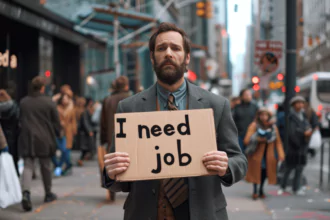The 30-Year mortgage rate recently dipped just below 7%, marking a remarkable occurrence in the financial area. This transformation affects home purchasers, bankers and the general economic situation. This article will deal with all the different factors that have contributed to this rate variation in order to give our readers a more complete understanding. We’ll look at some market conditions, governmental policies and customer behavior, as well as provide some predictions for the future trends.
Introduction
Why has the 30-year mortgage rate dropped to nearly 7 percent over these past few days or weeks? This change affects purchasers of homes, providers of mortgage loans, and whole economies at large. Yet what is driving this change, or what are its causes? We will be addressing these issues here in relation to market conditions, economic policy and consumer behavior.
Current Market Conditions
Mortgage rates vary due to a number of factors in the market. A key factor is recent Federal Reserve policy changes that are aimed at controlling inflation. Mortgage rates have been significantly affected by these changes in policy, according to the Federal Reserve. In addition to that, the shortage of supply and the excess demand in the housing market matter most. Moreover, supply and demand dynamics as far as housing market is concerned play a crucial role. For instance, when there is not enough housing stock relative to demand, prices go up, leading to higher mortgage rates. This is because investors – when uncertain about the economy-tend to invest in securities which are safe, implying higher interest rates that unnecessary increase the costs of borrowing, thereby raising mortgage rates as well.
Those looking to understand mortgages from major U.S. banks can find an in depth guide here. “A Comprehensive Guide to Mortgages from Major U.S. Banks.”
Federal Reserve Policies
Mortgage rates are significantly influenced by the monetary policy of Federal Reserve. The Federal Reserve’s decision; by adjusting interest rates for an inflation fight has directly as well as indirectly led to the change in mortgage rates according to recent researches. Lower interest rates usually mean lower mortgage rates hence cheaper cost of borrowing thus boosted loans uptake. However, if the Fed hints that it might increase rates in future, mortgage rates are likely to go up in anticipation as the cost of money tomorrow is reflected by today’s interest rates at which one borrows.

Economic Indicators
Mortgage rates are affected by different economic indicators such as employment levels, inflation rate and GDP growth rate. When employment is high, it usually increases consumption among consumers hence more people demanding for houses which might raise mortgage rates. When prices are rising on the other hand, inflation erodes away at buying power forcing the Federal Reserve to raise interest rates to check inflation, hence higher mortgage rates. GDP also contributes to this since more lending and investment often comes with economic advancement, leading to a rise in interest rates.
Consumer Behavior
Consumer behavior plays a significant role in determining the 30-year mortgage rate. People feel good about their economic future and undertake home loans when consumer confidence is high, raising the demand for money and ultimately raising the cost of borrowing. In contrast, during economic uncertainty or recession periods people opt to cut down on borrowing with a view of saving for future leading to a drop in interest rates. Moreover, changing consumer preferences, especially where one rents instead of buying a house have implications on market demand as well as interest rate levels.
Predictions for Future Trends
Economical experts anticipate that based on economic conditions and Federal Reserve policies affecting their interest rates will in future remain unstable related to any or none of these factors. Nevertheless, it offers some relief to home buyers who were worried following the recent 7% depreciation. However, changes would only depend on how well governments manage inflation rates while recovering from one recession into another. Therefore, stakeholders in this industry should monitor it closely.

Conclusion
The 30-year mortgage rate’s fall below 7% has been as a result of complex interactions between market conditions, Federal Reserve policy shifts, economic indicators, and consumer behavior. These factors help those involved in housing make smart decisions while participating in the market. It will be important to monitor these trends carefully as it involves looking into future interest rate scenarios within an evolving economy.
FAQ – Frequently Asked Questions
Federal Reserve policy decisions, in particular interest rates adjustments, have an impact on mortgage rates because they influence the cost of borrowing money, which is then transferred to the consumer.
The level of employment, inflation rate and GDP growth are some of the economic indicators influencing consumer spending and borrowing decisions thus affecting mortgage interest rates.
The 30-year fixed-rate mortgage is important as this duration fits the majority homebuyers pockets with its trade off between affordable monthly payments and higher total interest costs.
Demand is the primary driver of interest rate movements. Confidence fuelled borrowing rises rates while economic uncertainty suppresses this reducing them.
Future mortgage rate trends depend on a multitude of factors such as control of inflation, Federal Reserve monetary policies and emergence from recession hence need for these parameters’ constant surveillance.












